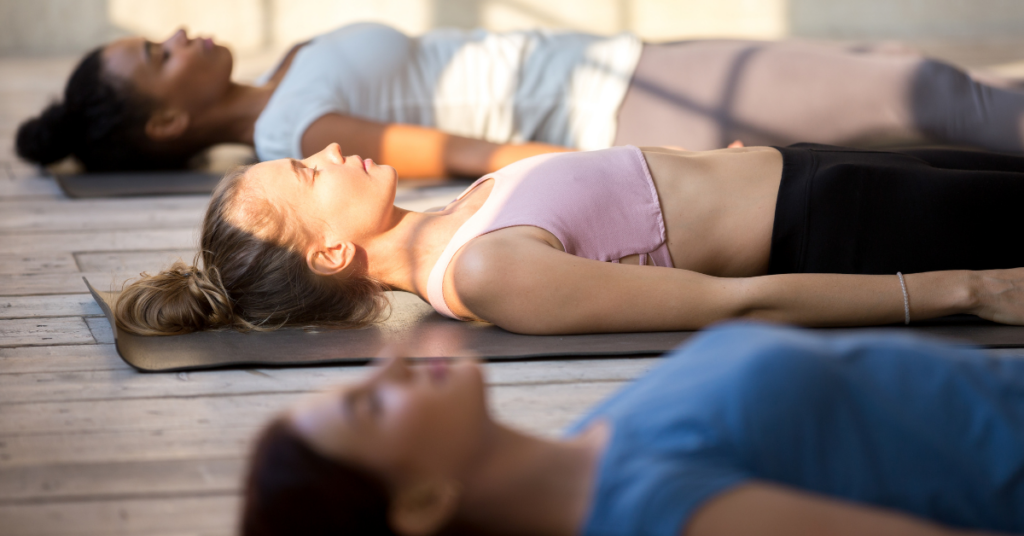Breathwork, or the practice of controlled breathing, has become an increasingly popular tool for managing stress, enhancing focus, and promoting overall wellness. Through simple breathing exercises, breathwork can help calm the mind, reduce anxiety, and improve concentration. Whether you’re looking to enhance mental clarity, relax after a long day, or improve your mindfulness, breathwork offers accessible techniques that can make a big difference.
This guide will introduce you to the basics of breathwork, explaining its benefits and providing step-by-step techniques that you can practice anywhere. By incorporating mindful breathing into your daily routine, you can boost your mental and physical well-being.
Understanding Breathwork and Its Benefits
What is Breathwork?
Breathwork refers to a range of breathing exercises designed to enhance mental, emotional, and physical health. These techniques, often inspired by yoga and meditation, encourage controlled breathing patterns to create specific physiological responses. Breathwork practices range from simple mindfulness exercises to structured breathing sequences aimed at deep relaxation or focus.
Many breathwork techniques are easy to learn and practice, making them ideal for managing stress and promoting mindfulness in daily life.
The Science Behind Breathwork
Breathwork impacts the body’s autonomic nervous system, which regulates involuntary functions such as heart rate and digestion. Controlled breathing activates the parasympathetic nervous system, also known as the “rest and digest” response, which helps reduce stress hormones and promote relaxation. Slow, deep breathing can lower blood pressure, slow the heart rate, and help calm the mind, making it easier to manage stress and stay focused.
By practicing breathwork, you can actively influence your body’s stress response, creating a sense of calm and mental clarity.
Health Benefits of Practicing Breathwork
Breathwork offers numerous benefits for both mental and physical health. Some of the primary benefits include:
- Reduced stress: Breathwork helps lower cortisol levels, reducing feelings of stress and anxiety.
- Improved focus: Controlled breathing enhances mental clarity, making it easier to concentrate on tasks.
- Better emotional regulation: Breathwork encourages mindfulness, helping you respond calmly to emotions.
- Enhanced resilience: Regular practice can build resilience, making it easier to handle daily challenges.
These benefits make breathwork a powerful tool for anyone looking to improve mental well-being and overall wellness.
To learn about the benefits of controlled breathing techniques, explore What Is Breathwork? from WebMD. This guide explains how breathwork can reduce stress, improve focus, and support overall well-being.

Simple Breathwork Techniques to Get Started
1. Box Breathing (Four-Square Breathing)
Box breathing, also known as four-square breathing, is a technique that involves breathing in a structured pattern to reduce stress and improve focus. It’s commonly used by athletes, military personnel, and individuals looking for a quick way to calm the mind.
How to practice box breathing:
- Inhale through your nose for a count of four.
- Hold your breath for a count of four.
- Exhale slowly through your mouth for a count of four.
- Hold your breath again for a count of four.
Repeat this cycle several times, focusing on the steady rhythm of your breath. Box breathing is especially effective during stressful moments, as it helps ground your mind and ease anxiety.
2. Diaphragmatic (Belly) Breathing
Diaphragmatic, or belly breathing, encourages deeper breaths by engaging the diaphragm, which increases oxygen flow and promotes relaxation. This technique is excellent for releasing physical tension and calming the mind.
How to practice diaphragmatic breathing:
- Sit or lie down in a comfortable position, placing one hand on your chest and the other on your abdomen.
- Inhale deeply through your nose, allowing your abdomen to expand as you breathe in.
- Exhale slowly through your mouth, feeling your abdomen contract as you release the breath.
Practice belly breathing for several minutes to reduce stress and bring your focus to the present moment. This technique is also useful for managing anxiety, as it helps release physical and emotional tension.
3. Alternate Nostril Breathing (Nadi Shodhana)
Alternate nostril breathing, or Nadi Shodhana, is a calming technique commonly used in yoga. It helps balance the body’s energy, clears the mind, and reduces stress.
How to practice alternate nostril breathing:
- Use your right thumb to close your right nostril, then inhale through your left nostril.
- Close your left nostril with your ring finger, release your right nostril, and exhale through the right.
- Inhale through the right nostril, then close it and exhale through the left.
Repeat this pattern for a few minutes. Alternate nostril breathing is ideal for calming the mind and balancing energy, making it a helpful practice before meditation or sleep.
For a calming breathing technique to reduce stress and improve focus, check out Alternate Nostril Breathing from Healthline. This guide provides step-by-step instructions and explores its benefits for mental clarity and relaxation.

Breathwork for Focus and Mental Clarity
4-7-8 Breathing for Concentration
The 4-7-8 breathing technique helps enhance focus and reduce stress, making it a popular method for moments of distraction or anxiety.
How to practice 4-7-8 breathing:
- Inhale through your nose for a count of four.
- Hold your breath for a count of seven.
- Exhale slowly through your mouth for a count of eight.
Repeat this cycle four times. The 4-7-8 method quickly reduces stress and brings clarity, making it useful for preparing the mind for focused tasks or calming down before sleep.
Resonant Breathing (Coherent Breathing)
Resonant breathing, or coherent breathing, involves breathing at a steady, relaxed pace to improve coherence between breathing rhythm and brain waves.
How to practice resonant breathing:
- Inhale through your nose for a count of five.
- Exhale slowly for a count of five.
Continue this cycle for several minutes. Resonant breathing is effective for promoting calm and mental clarity, helping you feel more grounded and focused.
Breath Counting for Mindfulness
Breath counting is a simple meditation technique that enhances focus and mindfulness. By counting each breath, you redirect your mind away from distractions and into a state of present awareness.
How to practice breath counting:
- Close your eyes and take a deep breath.
- On the next inhale, mentally count “one.” Exhale.
- Inhale again, counting “two.” Exhale.
- Continue counting each inhale until you reach ten, then start over.
Practicing breath counting helps improve concentration and brings a sense of calm, making it an excellent technique for beginners in meditation.

Incorporating Breathwork into Daily Life
Using Breathwork for Morning Energy
Breathwork can be a great way to energize yourself in the morning without relying on caffeine. Techniques like diaphragmatic breathing or resonant breathing help awaken your mind and body naturally, setting a positive tone for the day.
Spend a few minutes each morning practicing breathwork to feel more alert, focused, and ready to take on the day’s tasks.
Practicing Breathwork for Stress Relief During the Day
Breathwork can be a quick and effective way to relieve stress during busy or challenging moments. Techniques like box breathing or 4-7-8 breathing are ideal for short breaks, helping you reset your focus and calm your mind.
Incorporate brief breathwork sessions throughout the day to manage stress and stay mentally balanced.
Breathwork for Better Sleep
Practicing breathwork in the evening can help you unwind and prepare for restful sleep. Techniques like alternate nostril breathing or resonant breathing calm the mind and reduce anxiety, making it easier to relax at bedtime.
Try a few minutes of breathwork before bed to improve sleep quality and wake up feeling refreshed.
For quick and effective ways to improve your mental clarity and well-being, explore our guide on 10 Minutes to BoostMental Health and Focus. Discover simple strategies to enhance focus and reduce stress in just a few minutes a day.

Overcoming Common Challenges in Breathwork
Staying Consistent with Breathwork Practice
Consistency is key to experiencing the benefits of breathwork. To build a habit, start by incorporating short sessions into your daily routine, such as morning or evening practice. You can also integrate breathwork into existing routines, like meditating or journaling, to make it easier to stick with.
Managing Discomfort or Dizziness
Some people may feel lightheaded during breathwork, especially when trying new techniques. To prevent discomfort, practice at a comfortable pace and avoid over-breathing. If you feel dizzy, take a break and resume only when you feel stable. Slow, controlled breathing helps avoid hyperventilation and ensures a comfortable experience.
Setting Realistic Goals and Expectations
Approach breathwork with patience and realistic expectations. Start small, practicing one or two techniques that resonate with you. Over time, you’ll naturally build confidence and experience the benefits. Breathwork is a gradual process, so enjoy each practice without putting pressure on immediate results.
Breathwork is a powerful, accessible tool for reducing stress, improving focus, and enhancing mental clarity. By practicing simple breathing techniques, you can support your physical and mental health, creating a greater sense of calm and resilience. Whether you’re a beginner or have some experience with mindfulness, breathwork offers an effective way to balance your mind and body.
Start with a few of these techniques, and enjoy the positive impact that mindful breathing can bring to your life. With regular practice, you’ll experience the benefits of improved focus, reduced stress, and a renewed sense of well-being.
For simple exercises to reduce stress and enhance focus, explore our guide on Mindful Breathing Techniques. Learn how these techniques can help you achieve calm and balance in your daily life.




















